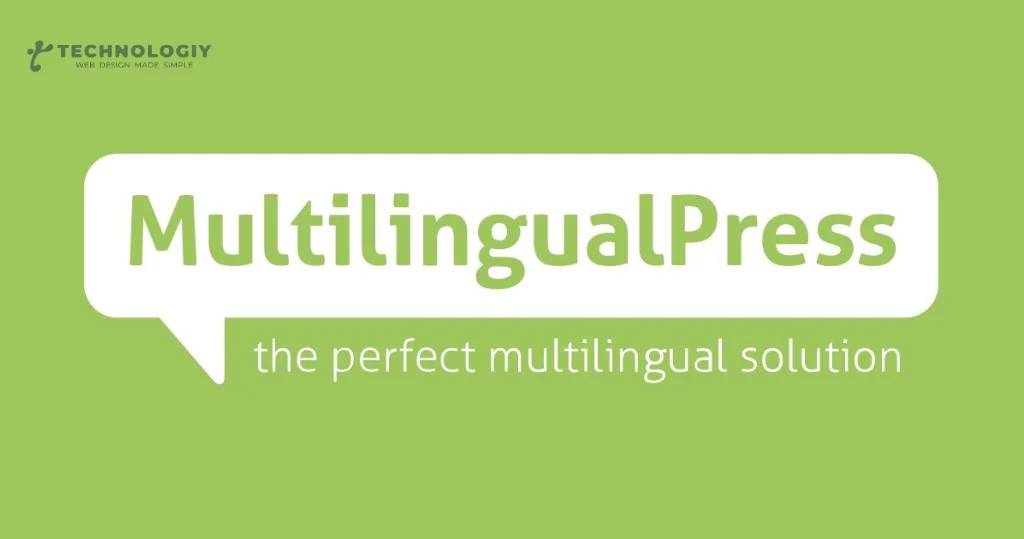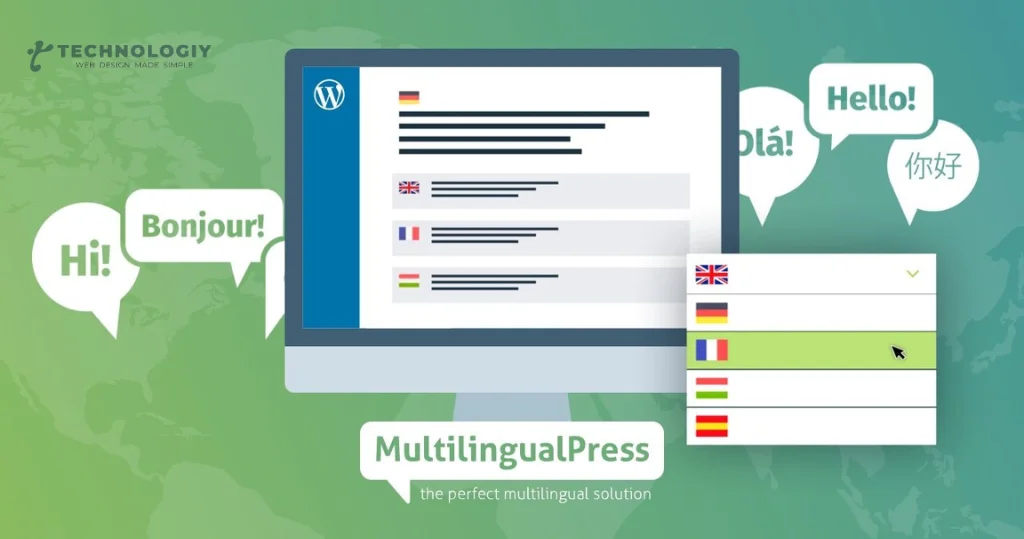Expand Your Reach with Multilingual WordPress Solutions: In today’s interconnected world, reaching a global audience has become more important than ever. Whether you’re a blogger, business owner, or content creator, one of the most effective ways to expand your reach is by offering multilingual solutions on your WordPress website. By making your content accessible in multiple languages, you can tap into new markets, engage with a wider audience, and ultimately grow your online presence. In this blog post, we’ll explore the benefits of multilingual WordPress solutions and provide practical tips on how to implement them effectively.
Why Multilingual WordPress Solutions?
Reach a global audience:
By offering content in multiple languages, you can connect with people from different countries and cultures. This not only expands your potential customer base but also allows you to engage with a diverse range of perspectives and ideas.
Improve user experience:
Language is a significant barrier for many internet users. By providing content in their native language, you can enhance the user experience and make it easier for visitors to navigate and understand your website.
Increase SEO visibility:
Multilingual WordPress solutions can help improve your website’s search engine optimization (SEO) efforts. By targeting keywords and phrases in different languages, you have the opportunity to rank higher in search engine results pages and attract more organic traffic.
Tips for Implementing Multilingual WordPress Solutions:
Choose a reliable translation plugin:
WordPress offers a wide range of translation plugins that can seamlessly integrate with your website. Some popular options include WPML, Polylang, and Weglot. Research and choose a plugin that best suits your needs in terms of functionality, ease of use, and compatibility.
Create high-quality translations:
Translating your content accurately is crucial to ensure a positive user experience. If you’re not fluent in the target language, consider hiring professional translators or using reputable translation services to ensure the quality of your translated content.
Optimize your translated content for SEO:
When translating your content, pay attention to SEO aspects such as meta tags, URLs, and keywords. Ensure that your translated pages are properly optimized to improve their visibility in search engine results.
Provide language switcher options:
Make it easy for visitors to switch between languages by implementing a language switcher on your website. This could take the form of a dropdown menu, flags symbolizing various languages, or any other user-friendly method that enables users to pick their preferred language.

Localize your content:
Localization goes beyond translation and involves adapting your content to the specific cultural nuances and preferences of your target audience. This can include using appropriate images, colors, and formatting that resonate with your global audience.
In conclusion, embracing multilingual WordPress solutions can significantly expand your reach and help you connect with a global audience. By making your content accessible to people from different countries and cultures, you can improve user experience, increase SEO visibility, and ultimately grow your online presence. Implementing these solutions may require some initial effort, but the long-term benefits make it a worthwhile investment. So, don’t limit yourself to a single language – let your WordPress website speak the language of the world!
Remember, expanding your reach with multilingual WordPress solutions is just one piece of the puzzle. Stay tuned for more tips and tricks to optimize your online presence and achieve your goals.The Ultimate Guide to Multilingual WordPress Solutions:
Are you ready to take your WordPress website to the next level and reach a wider audience? If so, then it’s time to explore the world of multilingual WordPress solutions. In this ultimate guide, we will walk you through everything you need to know about making your website multilingual, from the benefits of going multilingual to the best solutions available.
Expanding your website’s reach to a global audience can have numerous benefits:
Increase Your Website Traffic:
By catering to different language speakers, you can attract more visitors to your website, potentially leading to higher conversion rates and increased revenue.
Improve User Experience:
Providing content in your visitors’ native language makes it easier for them to understand and engage with your website. This can result in higher user satisfaction and longer browsing sessions.
Boost SEO:
Multilingual websites have the potential to rank higher in search engine results for specific language searches. This can help increase your website’s visibility and attract targeted organic traffic.
Choosing the Right Multilingual WordPress Solution; Now that you understand the benefits, let’s dive into the different multilingual WordPress solutions available.
Here are some popular options worth considering:
WPML (WordPress Multilingual Plugin):
WPML is a powerful plugin that allows you to easily translate your website content, including posts, pages, custom post types, and even theme and plugin texts. With its intuitive interface and robust translation management features, WPML is a top choice for many WordPress users.
Polylang:
Polylang is another popular multilingual plugin that offers an easy-to-use interface for translating your website content. It supports unlimited languages, and you can even choose different languages for different sections of your website.
Weglot:
Weglot is a cloud-based translation solution that automatically translates your website content into multiple languages. It offers a simple integration process and allows you to customize translations to ensure they are accurate and contextually relevant.
TranslatePress:
TranslatePress is a user-friendly translation plugin that allows you to translate your website directly from the front-end. It offers a visual translation editor and supports both manual and automatic translation options.
Tips for Implementing Multilingual WordPress Solutions; Once you’ve chosen the right multilingual WordPress solution for your website.
Here are some tips to help you successfully implement it:
Plan Your Content Structure:
Before translating your content, consider how you want to structure your multilingual website. Decide whether you want separate domains, subdomains, or directories for each language.
Use SEO-Friendly URLs:
Ensure that your translated URLs are SEO-friendly by using language-specific slugs or subdirectories. This aids search engines in comprehending the language focus of your webpages.
Optimize Metadata and Hreflang Tags:
Translate and optimize your metadata, such as meta titles and descriptions, for each language. Additionally, implement hreflang tags to indicate the language and regional targeting of your pages.
Enable Language Switcher:
Make it easy for visitors to switch between languages by implementing a language switcher on your website. This allows users to navigate seamlessly and access content in their preferred language.
By making your WordPress website multilingual, you can open up new doors of opportunity and reach a wider audience. The benefits are undeniable, from increased traffic and improved user experience to better SEO rankings.
With the abundance of multilingual WordPress solutions available, it’s important to choose the one that best fits your needs. Consider factors like ease of use, translation management features, and customization options.
Remember to plan your content structure, optimize your URLs and metadata, and enable a language switcher for a seamless multilingual experience.
So, are you ready to take your WordPress website to new heights with multilingual solutions? Start exploring the options today and unlock the power of reaching a global audience.
The Top Multilingual WordPress Plugins for Seamless Language Integration:
In today’s globalized world, having a multilingual website is crucial for reaching a wider audience and expanding your online presence. If you’re utilizing WordPress as your content management system, you’re in a favorable position! There are several multilingual WordPress plugins available that can help you seamlessly integrate multiple languages into your website. In this blog post, we’ll explore the top multilingual WordPress solutions that can make your website accessible to a global audience.
WPML (WordPress Multilingual Plugin):
WPML is one of the most popular multilingual WordPress plugins available. It allows you to translate every aspect of your website, including pages, posts, custom post types, taxonomies, and even theme and plugin texts. With WPML, you can easily create language switchers, translate your content manually, or even use automatic translation services. It also offers compatibility with popular WordPress themes and plugins, making it a versatile choice.
Polylang:
Polylang is another powerful multilingual plugin for WordPress. It allows you to create bilingual or multilingual websites with ease. With Polylang, you can add as many languages as you want and translate your posts, pages, categories, tags, and custom post types. It also offers a language switcher widget, custom language switcher menus, and support for RTL languages. If you’re looking for a user-friendly and lightweight multilingual plugin, Polylang is definitely worth considering.
Weglot:
Weglot is a cloud-based multilingual plugin that offers a simple and efficient way to translate your WordPress website. It automatically detects your content and provides a language switcher that allows your visitors to switch between languages seamlessly. Weglot also offers automatic translation using machine translation, but you can always edit and improve the translations manually. With its user-friendly interface and powerful features, Weglot is a great choice for those looking for a hassle-free multilingual solution.
Multilingual Press:
Multilingual Press is a WordPress multisite-based multilingual plugin that allows you to create a network of sites, each representing a different language. With Multilingual Press, you can link your translated content together, making it easier for your visitors to navigate between different language versions of your website. It also offers automatic hreflang support, which helps search engines understand your multilingual content better, resulting in improved SEO performance.
G-Translate:
G-Translate is a popular multilingual plugin that offers automatic translation using Google Translate. It adds a language switcher widget to your website, allowing your visitors to choose their preferred language. G-Translate also provides an option to edit and improve the translations manually. While it may not offer as many advanced features as some other plugins, G-Translate is a simple and effective solution for getting your website translated quickly and easily.
In conclusion, having a multilingual website is essential for expanding your reach and engaging with a global audience. These top multilingual WordPress plugins, including WPML, Polylang, Weglot, MultilingualPress, and GTranslate, can help you seamlessly integrate multiple languages into your website. Whether you prefer manual translation or automatic translation services, there’s a multilingual WordPress solution that’s perfect for your needs. So, don’t miss out on reaching a wider audience – start making your website multilingual today!
Remember, seamless language integration is just a few clicks away with these top multilingual WordPress plugins. Expand your reach, engage with a global audience, and take your website to new heights. Start using these multilingual solutions today and unlock the true potential of your WordPress website.
